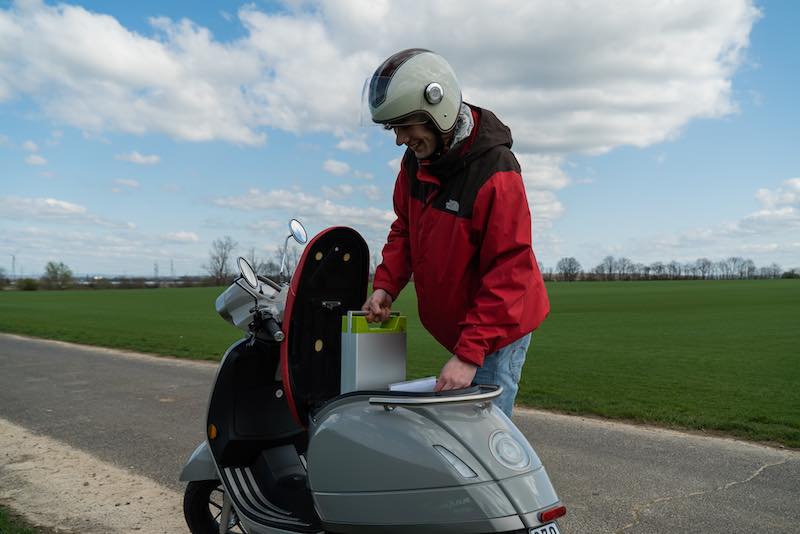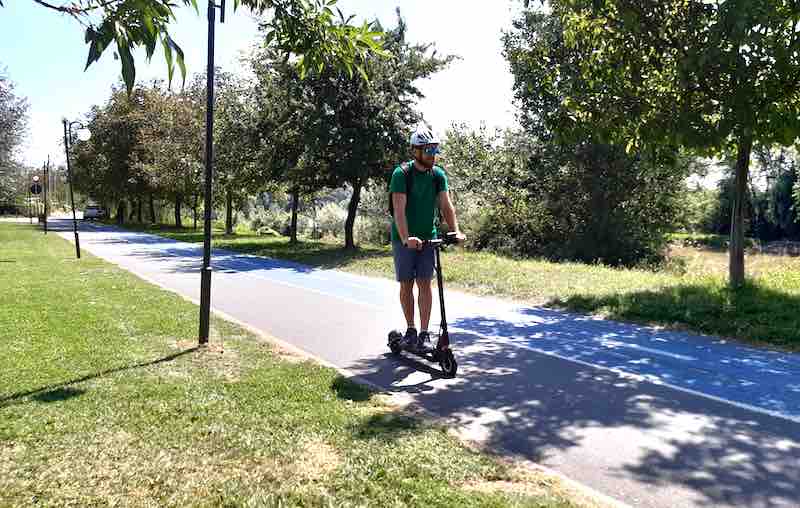This page contains affiliate links. This means that we may get a small commission for recommending products, if you choose to click on something and buy it. This does not cost you anything, but we wanted to be honest and let you know!
(Last Updated On: )More and more people believe that there are multiple ways micromobility is changing our environment. It is because it directly impacts environmental stress, urbanization, and space limitations.
New mobility services have entered the market with traffic and decongestion continuing to march on urban and suburban communities. Therefore, it is changing the game in urban transportation.

Micromobility, a quick, convenient, and environmentally-friendly form of transport, promises to improve traffic and quality of life.
Table of Contents
The Significance of Micromobility
Pioneered by Bird and Lime, micromobility companies in the United States have been rolling out in metropolitan areas.
The rapidly growing industry of micromobility gave rise to electric scooters (e-scooters), which are documented to be the fastest-growing mode of transport.

But Can We Count on Micromobility to Save our Cities?
Combating Noise and Congestion
Two of the main ways micromobility is changing our environment is by reducing noise and congestion in our cities.
Cars have ruled our roads over the past century and now bring rumbling nightmares of high noise levels and congestion on inner-city roads and highways.
Walkability spaces are insufficient due to maximized car space. As cities worldwide are quickly growing in size and population, they are pushed to solve transportation crises.
Although mass transportation provides solutions to congestion and gas-powered emissions, commuting issues remain at large.
Not all have an equal or easy distance to mass transit systems, thus frustrates commuters to use transit stations or bus stops.
Micromobility is here to present an alternative to crowded public transportation for commuters.
Most trips are short trips or a travel distance of under three miles from A to B, accounting for 46% of car traffic in the US. In 2015, American citizens saw an average of 24 seconds increase in their daily commute.
It may not seem a lot, but it adds up as the journey gets longer due to more massive traffic and lower speeds. Imagine the wasted hours and inconvenience!
The ability to close the first and last-mile gap was one of the significant opportunities offered by micromobility.
Emerging micromobility networks such as e-scooters and e-bikes can address fast and dangerous speeds and reduce cars’ numbers on the road. As a result, it makes the streets and public spaces pleasant and safer.

Reducing Carbon Emissions – The People-Centric Cities.
One of the ways micromobility is changing our environment is by reducing carbon dioxide emissions.
Cities worldwide strive to build a more sustainable urban transport system, yet many efforts must be made to achieve it.
The unexpected rise of micromobility provides a vital link in transitioning towards sustainable and people-centric cities.
According to the McKinsey Center for Future Mobility, about 60% of car trips worldwide are less than 8 kilometers.
An increase of 5% of people who would switch from riding cars to e-scooters, e-bikes, or even merely bicycles for short trips would reduce seven percent of carbon dioxide emissions. It is equivalent to taking off 134 million vehicles by 2030.
More than just a gadget, the e-scooter is seen as a catalyst for climate action, driving a broader step of sustainable transport.
More technological developments are helping micromobility to be more eco-friendly. Despite the beneficial advantages, doubts linger around dockless bikes and scooters’ long-term sustainability and emissions coming from manufacturing and maintenance.
Research and surveys helped micromobility companies to verify how e-scooters support cities’ sustainable future.
Many ride on shared scooters offered by Lime, Bird, Uber, and Lyft. An assessment conducted by North Carolina State University (NCSU) concluded that on a per-mile basis, shared scooters produce half as many greenhouse gases as cars, but more than the full capacity of the bus, biking, or walking.
Short lifespan and wasteful charging practices are the two main drivers of waste. Luckily, scooter companies have already made strides to improve the lifespans of their fleets.

Improving Public Health
Air pollution is a threat to public health; that is why micromobility companies brag about these new sustainable transportation modes’ green credentials.
Bicycles and other human-powered micromobility devices are additional physical activities for the public.
E-bikes and e-scooters have become an attractive option for women and older adults who are not into traditional bicycles.
Along with several supporting narratives, micromobility allows safe travel with lower environmental impact.
ABI Research says that by 2026 worldwide, installed base micromobility vehicles will reach 50 million. Bikes, pedelecs, e-scooters, and mopeds are expected to emerge as an alternative because of increased anxiety for using public transport due to fear of infection and the practice of physical distancing.
In countries where strict lockdowns are imposed and public transportation is either limited or suspended, the citizens are quick to shift to micromobility. The global pandemic made consumers reassess their transportation options.

Enhancing Efficiency and Saving Money
You do not need to be licensed to ride a bike or scooter – the easiest way to get around aside from walking. Without a drop of fossil fuel, micromobility accounted for 84 million trips in 2018.
With one or two motors, electric mobility can be generated as transportation. E-scooters and e-bikes are proven to be more energy-efficient than cars since rechargeable electric batteries can power them.
Going small indeed enabled commuters to save money on fuel redirecting away from the demand for fossil fuels.
Would you believe that the cost of fueling an e-scooter is only one percent of the cost of fueling a car? Micromobility is indeed environmentally-friendly and economically attractive.
As cars continue to dominate the streets, urban planners should think about filling in public transportation gaps. Mobility via transportation must not only be designed for vehicles.
The possibilities micromobility holds for a safe, quiet, and greener road are undeniable.

Conclusion
It is maybe at its experimental phase for now, but we can believe that these ways micromobility is changing our environment are very significant for our world.
Technology is continually evolving, creating new and efficient ways to improve the quality of life.
The future of electric mobility lies within a supportive regulation based on data from key performance measures and design which fully integrates with the public and urban infrastructures.
In the meantime, it’s up to you and me to embrace micromobility in our day-to-day life. Each of us can take small steps to make a long-lasting change for a better future while enjoying the process.

The Noble Urban represents more than just a person. It represents a lifestyle. A way of living. A noble life lived in an urban setting.







